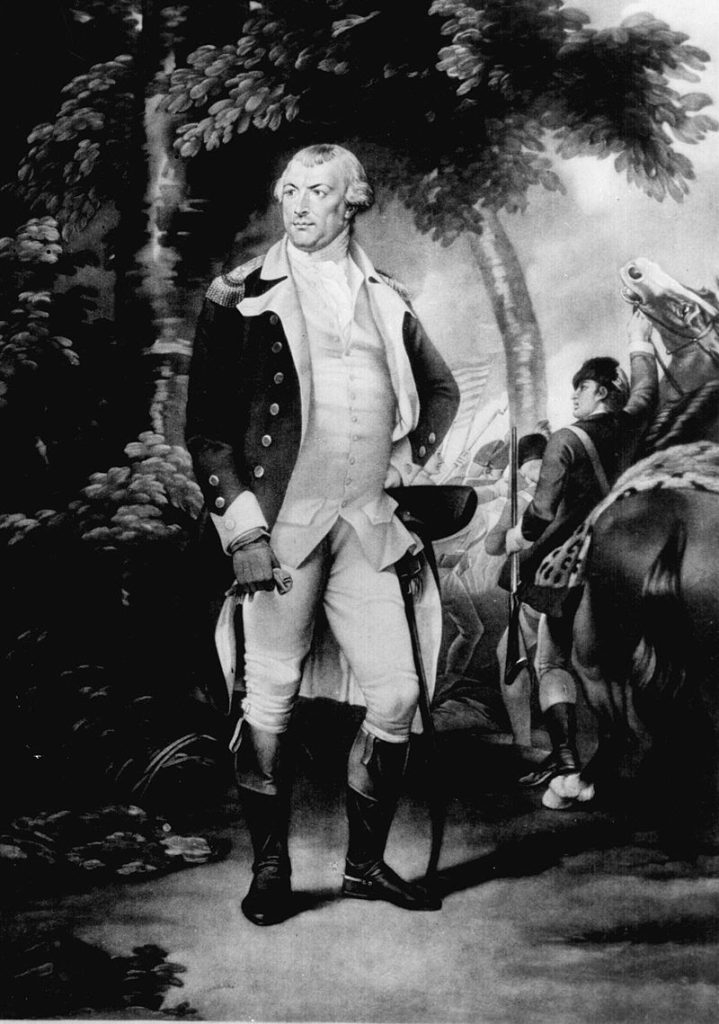

GENERAL NATHANAEL GREENE
Nathanael Greene, born August 7, 1742, in Warwick, Rhode Island, was the son of a Quaker farmer. Despite limited formal schooling, Greene taught himself mathematics and law and was one of the first advocates for public education. In 1770, he moved to Coventry to manage his family’s foundry. Four years later, Greene married Catherine Littlefield and helped form a local militia, the Kentish Guards. This involvement in military affairs led to his expulsion from the Quaker community, which opposed violence.
By 1775, Greene had risen quickly from a private to Major General of the Rhode Island Army of Observation, formed in response to the Siege of Boston. The Continental Congress soon appointed him brigadier in the Continental Army, and General George Washington entrusted him with commanding the city of Boston after the British evacuation. Greene was promoted again to major general, where he oversaw the construction of defensive fortifications on Long Island, now Fort Greene Park.
Greene played key roles in the Revolution’s northern campaigns, commanding forces at the Battle of Trenton and managing Fort Lee in New Jersey. Although he was blamed for the loss of Forts Washington and Lee, he retained Washington’s confidence and continued to serve in pivotal battles like Brandywine and Germantown.
In 1778, Washington appointed Greene as Quartermaster General at Valley Forge, where he restructured supply efforts but retained his battlefield role, leading troops in battles like Monmouth and Rhode Island. However, frustrations with Congress’s interference led him to resign from this position.
In October 1780, Greene took command of the Southern Army, facing a challenging situation with limited supplies and stronger British forces. Strategically dividing his troops, he facilitated key American victories at Kings Mountain and Cowpens. His tactical retreat across North Carolina, culminating in the “Race to the Dan River,” was later celebrated as a brilliant military maneuver that contributed to the eventual British surrender at Yorktown.
After the war, Greene settled in Georgia on an estate called Mulberry Grove, granted to him in recognition of his service. He passed away on June 19, 1786, at age 43 from heatstroke. Greene’s legacy as a skilled, self-taught military leader endures, and he is commemorated by monuments and grants in the South for his vital role in the American Revolution.

© 2024 Halifax County Tourism
1180 Bill Tuck Highway
South Boston, Virginia 24592
434-572-2543
info@gohalifaxva.com
A Hellow Yellow website.
